32 things to know about Newfoundland dogs
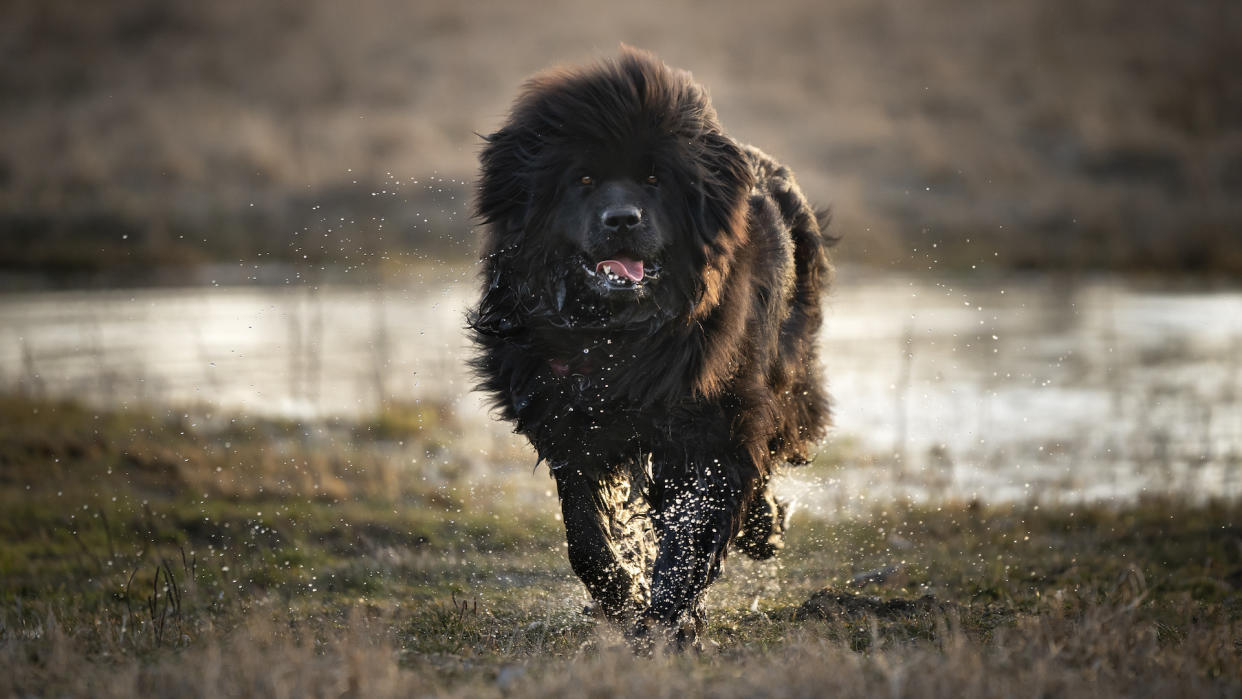
There are so many things to know about Newfoundland dogs. Imagine crossing a gigantic hairy bear with a cuddly lapdog, and you’ll dream up something close to the Newfoundland. They’re a sweet, affectionate dog in a massive package.
Their sheer size and weight – they can top the scales at over 150lb and tend to munch their way through plenty of the best dog treats on their way there – means that they need consistent training from an early age or an endearing puppy habit could quickly become totally unmanageable.
So, an experienced and strong handler is a must to cope with their friendly power, plus someone who isn’t fazed by drool, mud, water trails (they like to splash around in their water bowl and drip it round the house) and frequent vacuuming to deal with that marvellous coat’s almost continuous shedding. Neat freaks need not apply.
If that doesn’t put you off, here’s a family-friendly, devoted and special breed with fans all over the world. They’re recommended as among the most big dog breeds that make sensible pets. And they’ll even save your life if you get into trouble out swimming. Let’s find out more about these gentle giants.
32 things to know about Newfoundland dogs
1. An established breed
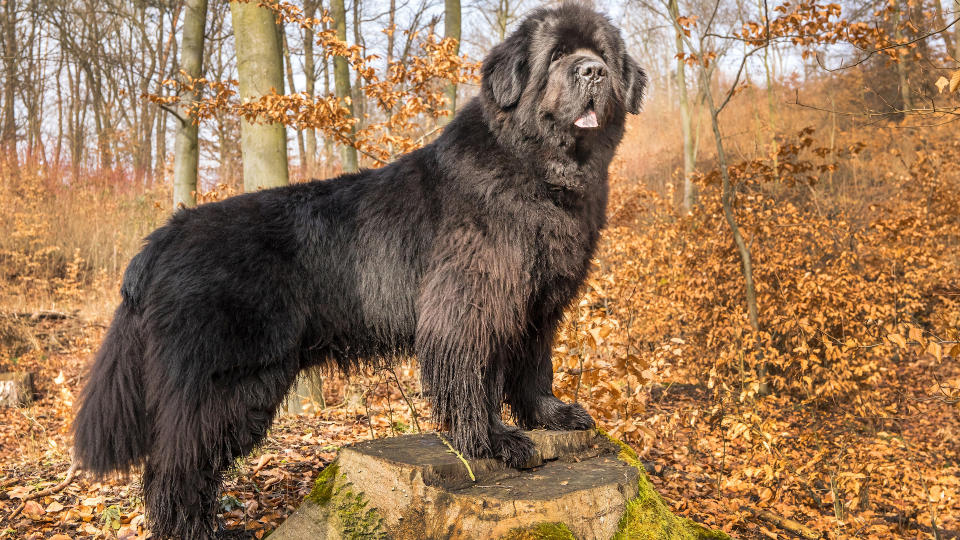
The Newfoundland was recognized as a breed by the American Kennel Club back in 1886, just two years after the registry was itself officially founded. The Newfoundland Club, founded in 1886 as well, lays claim to being the world’s oldest continuously registered breed club.
2. Among the largest dog breeds

Weighing in at up to 150lb (for males), the Newfoundland is one of the largest dog breeds on the planet. Their average height is 28in for males, and 26in for females.
3. A working dog par excellence
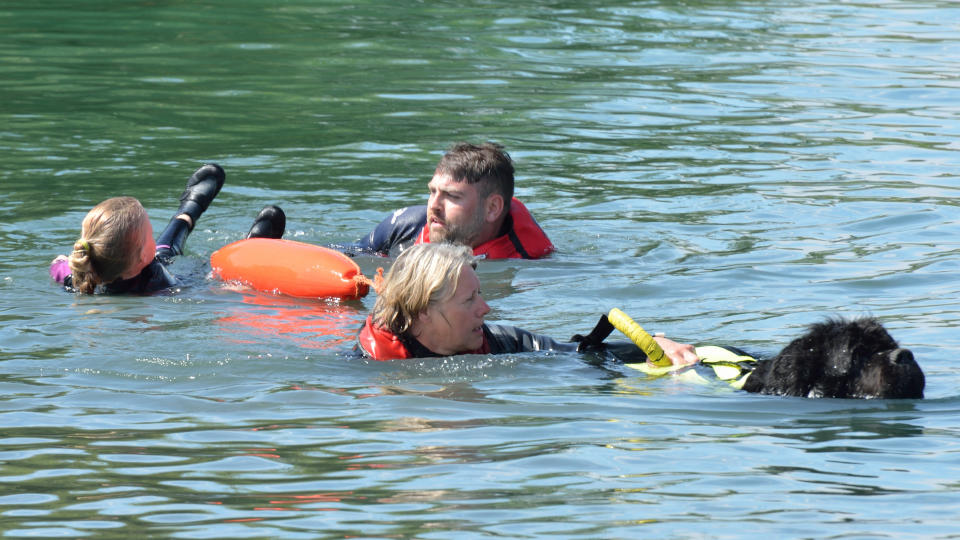
The Newfoundland belongs to the working dog group and deservedly so. This is a wonderfully versatile breed that can turn its paw to many jobs, from towing fishermen’s carts, to hauling logs in the forest, jumping out of fishing boats to retrieve equipment and even out of helicopters to save humans from drowning. Now that’s a dog you want to have by your side.
4. Webbed feet

In common with many dogs who were bred to work in water, the Newfoundland has webbed feet, which enable them to be great swimmers – like ducks.
5. Canadian origins
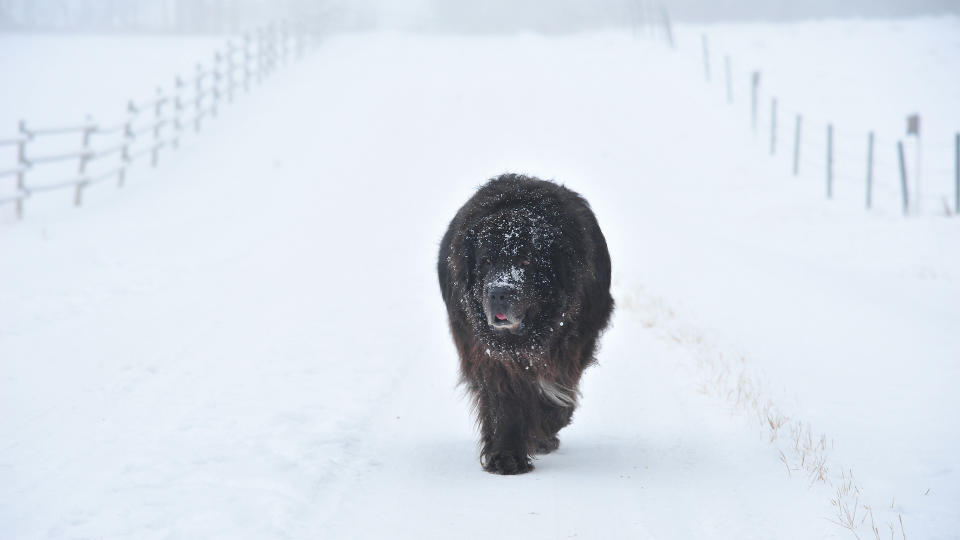
We say this breed has Canadian origins because his name comes from the island of Newfoundland where it was developed. However, it is likely to be a blend of native Indian dogs and European breeds brought across the Atlantic by explorers and fishermen.
6. A love of mud

The Newfoundland takes great joy in playing in mud and water, which is worth knowing in advance for the more house-proud potential dog owners. If you have pristine, white fluffy carpets, they won’t last long!
7. Life-saving instincts

This breed appears to have innate life-saving instincts. As naturally devoted companions, they will do anything to help their humans. So much so, that they have been trained to jump out of helicopters into water to carry out daring life-saving missions to swimmers in distress.
8. A minimal palette
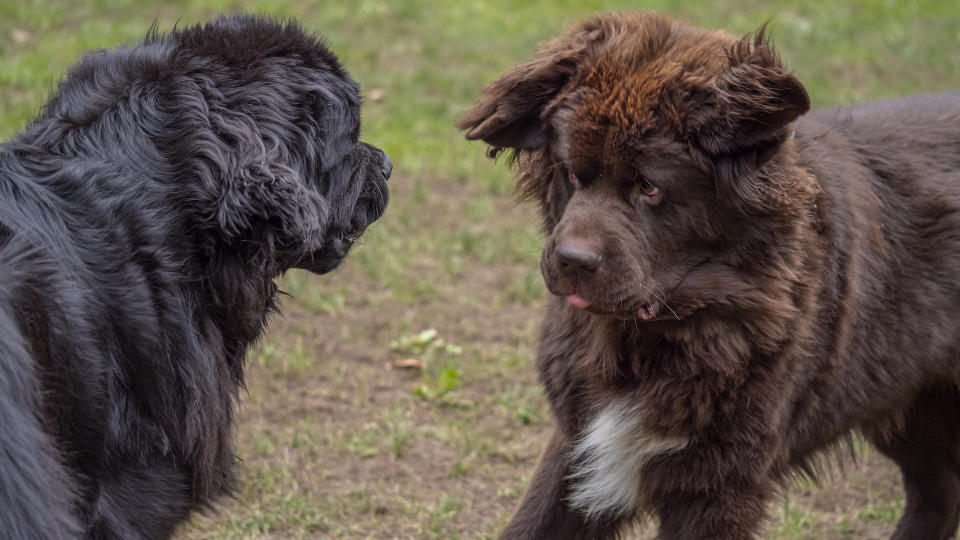
The Newfoundland comes in only three colors: black, brown or landseer (black and white), although the AKC recognizes gray, too. Splashes of white on the chest, toes, and tip of tail is permitted. There are other colors: beige, black and tan, white and brown, but these are not in the official breed standard and are not accepted colors in other countries, including the UK.
9. Waterproof coats
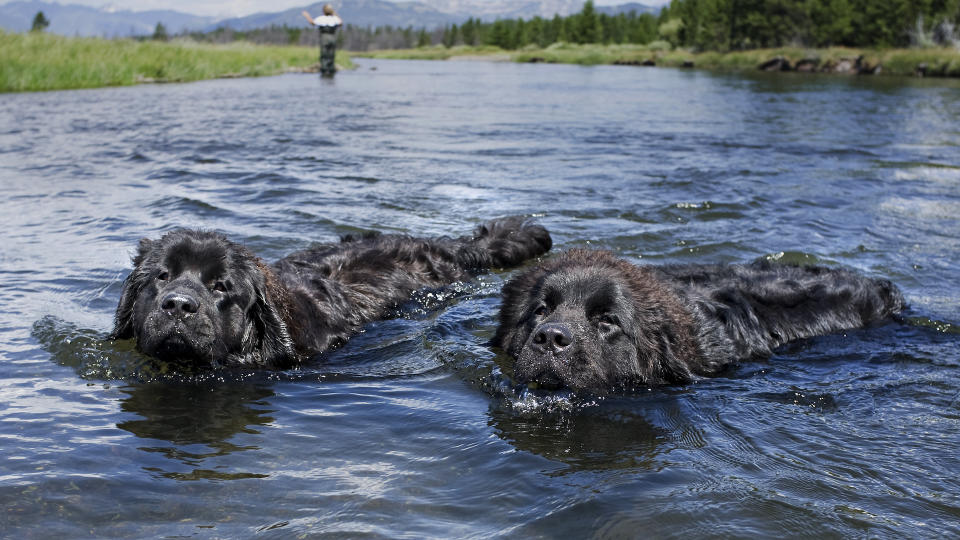
Their double coat is dense, coarse and oily, meaning it is water-resistant and therefore they can naturally maintain their body temperature even in icy water and freezing conditions — making them one of the best dog breeds for cold climates.
10. Continual shedders

Those with allergies to dog hair would do best not to fall in love with the Newfie. Delightfully cuddly and luxuriant as their dense coats are, they shed at least twice a year – and neutered or spayed dogs year-round. This means their thick coats need thorough, daily brushing with one of the best dog brushes — and with such a substantial animal, that produces a lot of loose hair!
11. Fisherman’s helpers
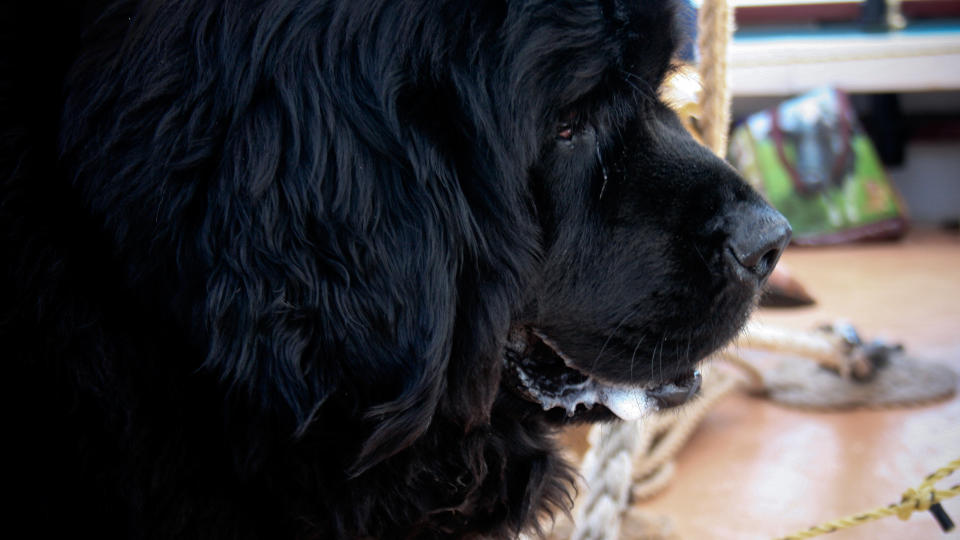
This strong breed was originally developed to assist fishermen, much like its neighbour the Labrador, pulling nets, trawling carts and jumping out of boats to retrieve lost equipment. Thanks to their oily coats and webbed feet, they’re one of the dog breeds that are made for swimming.
12. Family friendly
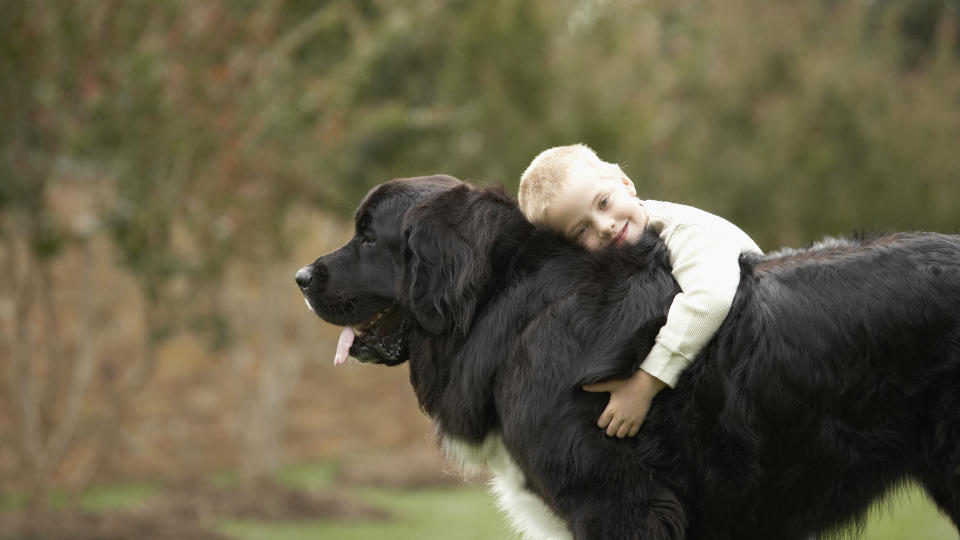
One of the friendliest dog breeds that are perfect for families, the Newfie is naturally affectionate, devoted to their humans and great with children. However, their massive size means that they do need access to outdoor space, and be aware that while they’re docile they outweigh most children – and small adults – so can easily inadvertently knock them over.
13. Big eaters

Of course, that massive physique needs plenty of sustenance to keep the engine burning. Newfoundlands eat like the proverbial horse – hardly surprising given that they’re as big as a small one! Puppies can put on as much 100lb in their first year – so get ready for a voracious appetite and have plenty of the best dry dog food on hand!
14. Doggy drooling
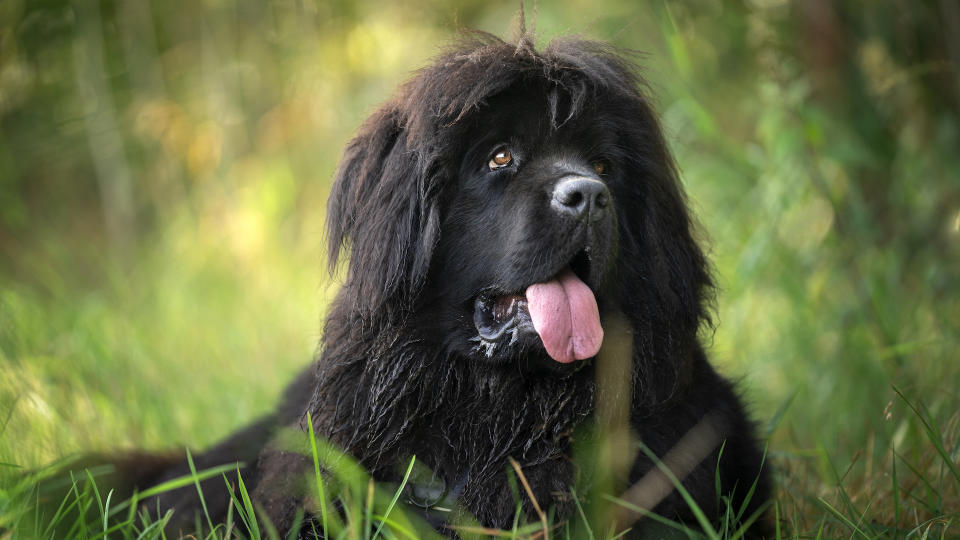
Newfies are prone to drooling due to their deep muzzle. They have extra skin around their mouth where saliva pools and drips from time to time. Wipe their face after a drink, and be prepared that the drool can get everywhere – on walls, carpets, furniture, and even guests. But you won’t actually care because your love for these giant fluffballs surpasses even this peeve. (And if you’re really desperate and you don’t care what he looks like, you can put on a little bib so it’s easy to wipe whenever required).
15. Big dog, big costs
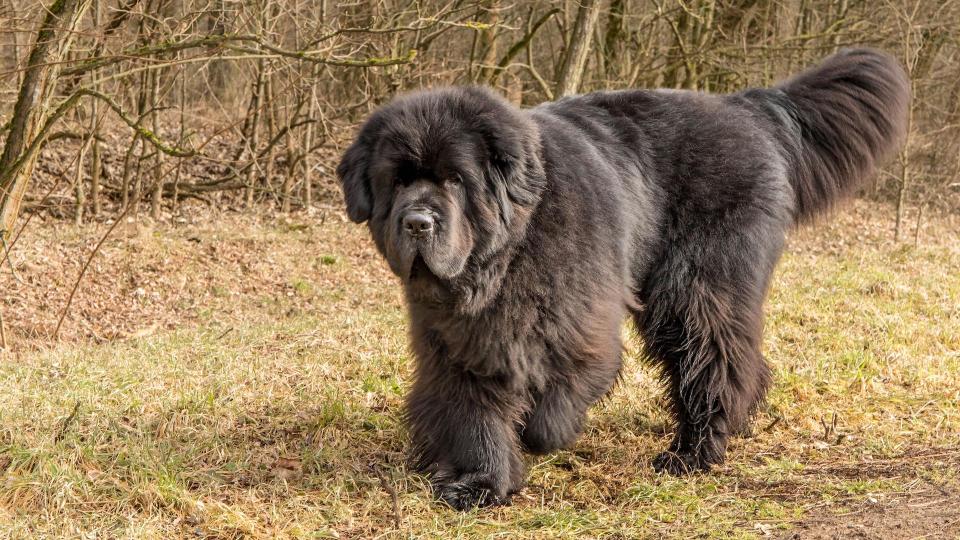
Everything costs more with a Newfoundland, particularly the best wet dog food or kibble to supply the enormous appetite, but also just simple things the extra large bed, crate, harness and so on costing more in larger sizes. It’s well worth learning to groom so that you don’t have to pay regular salon expenses too. Oh, and you might even need to buy a bigger car to fit him in!
16. Carpets are a no-no
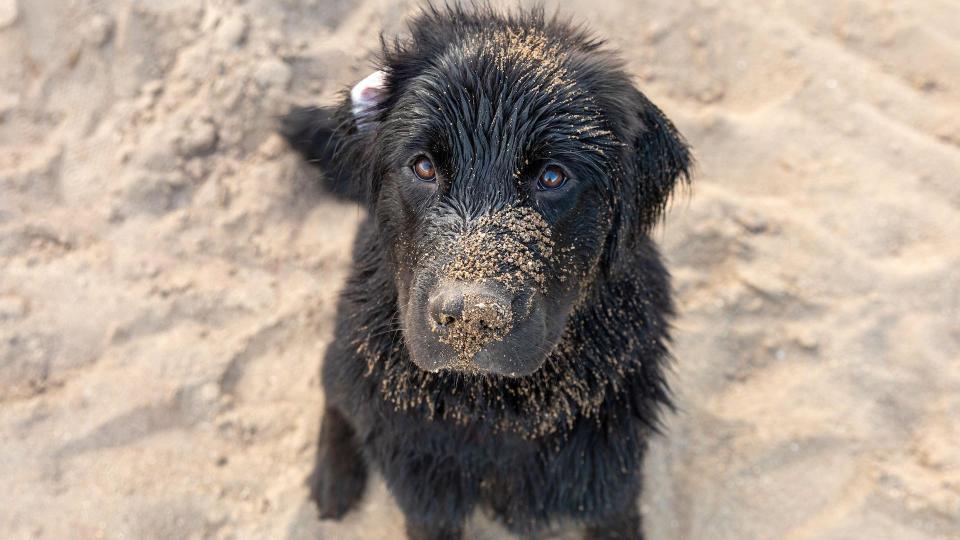
What with the constant drooling, their love of mud and water, the perpetual shedding and their sheer size exacerbating all of the mess created by the above, an easily cleanable, waterproof hard floor is by far the most practical option. They also tend to dunk their whole muzzle in the water bowl and splash it around as though they’re looking for fish on a Canadian island not your domestic kitchen. Sounds like a nightmare? But one look at this loveable teddy bear and you’ll forgive them anything.
17. Early training
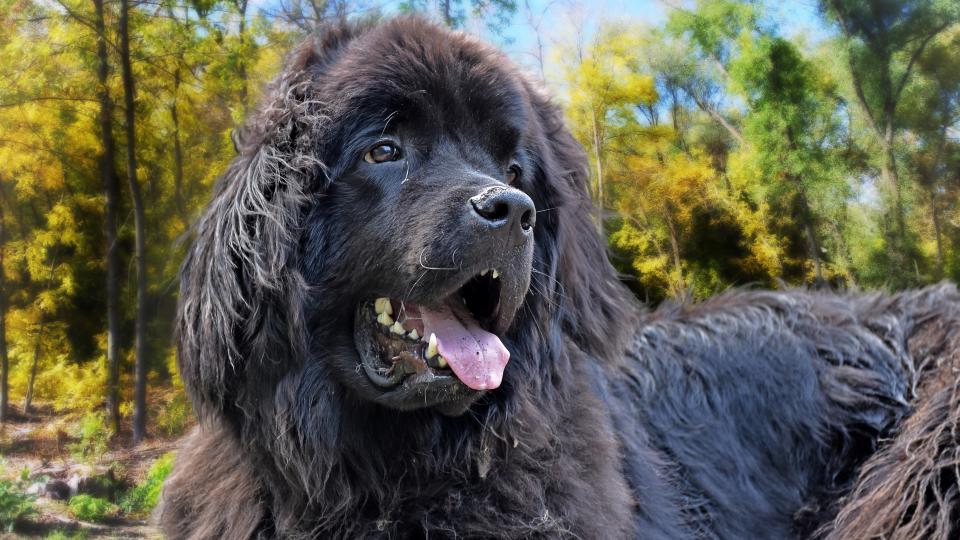
What a chihuahua might get away with, a Newfoundland certainly cannot. Their vast size means that any misdemeanors have a big impact. A cute fluffy puppy jumping up is one thing, but when that puppy grows into a 150lb bear, it can be dangerous. Counter-surfing is a breeze for them, and their appetite is real. If they pull on a lead, you have no chance at all but to be towed like a water-skier after them. They must be consistently well trained, and well controlled from the outset, so researching practical tips for training your dog on your own is highly recommended if you'd prefer not to employ the services of a professional.
18. Slow to mature

In common with other giant breeds, Newfoundlands take relatively longer than small dogs to grow to their full adult size. They do not reach physical maturity until they are nearly two years old, and mental maturity can take even longer. As puppies they should be fed a specialist large-breed puppy food, which caters for their specific nutritional requirements.
19. Daily vacuuming

Most Newfie owners admit to vacuuming two or three times per day. As one owner says, “You can vacuum enough hair per day to clothe a small dog”! These dogs shed a lot, they have a lot of hair and with its black or brown color, it tends to show up. If you don't fancy vacuuming every day, how about a robot vacuum that keeps on top of it so you don’t have to?
20. A stubborn side
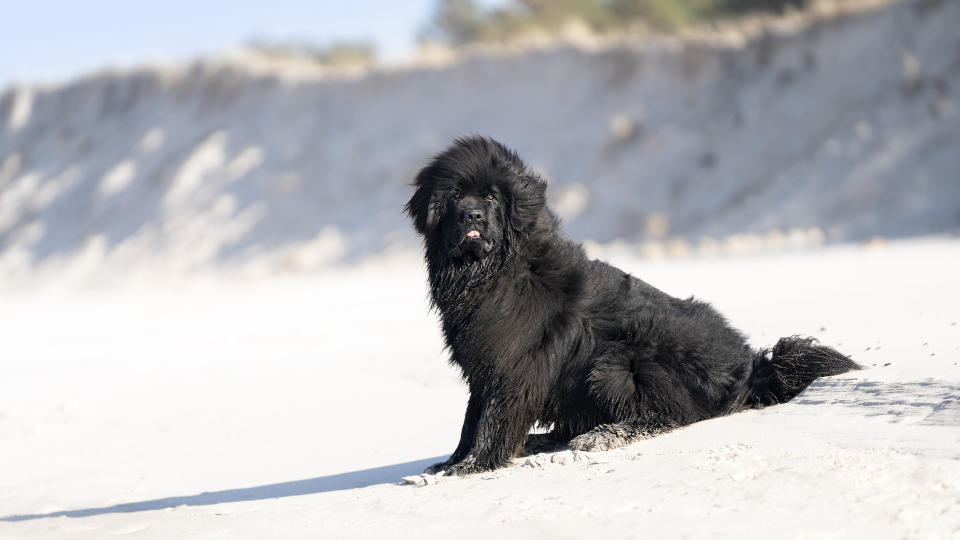
Although this is an undeniably affectionate breed who loves to work, if they are not sufficiently stimulated and well trained, they can show a stubborn streak. Some Newfie owners find their dog decides to lie down mid-walk and not budge – and try moving a 150lb dead weight! Sometimes they seem to weigh up the pros and cons of obeying your commands. However, they can be trainable and are naturally loyal so treat them right from the outset with positive reinforcement, give them adequate exercise and play time with the best dog toys and plenty of mental stimulation and you shouldn’t have any problems.
21. A shorter lifespan
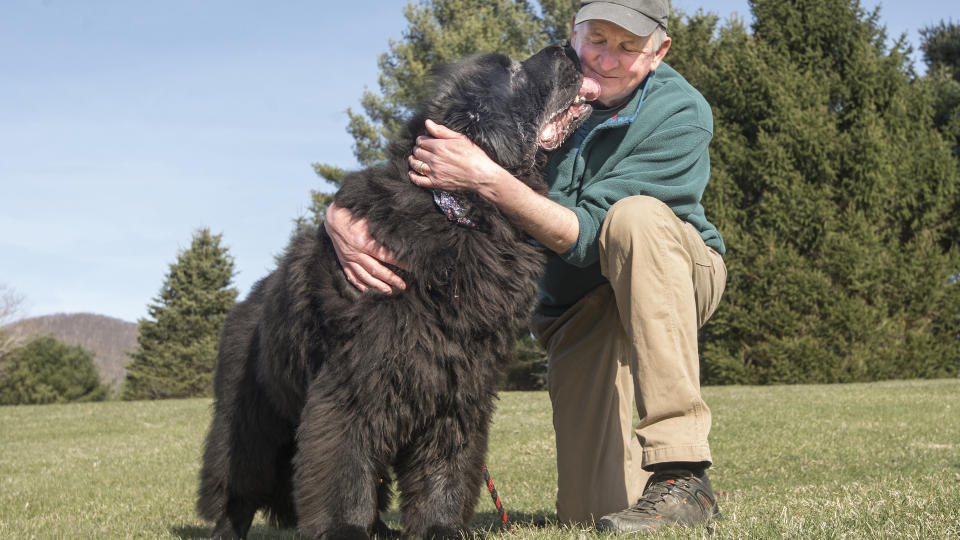
Sadly, in common with most other giant breeds, Newfies have a short lifespan compared to smaller dogs. They are not expected to survive much beyond 10 years.
22. Gentle giants

The hallmark of the Newfoundland breed, according to the AKC, is “sweetness of temperament; this is the most important single characteristic of the breed”. Now if that doesn’t make up for the drool and copious shedding, what will?
23. They're a real crowd pleaser
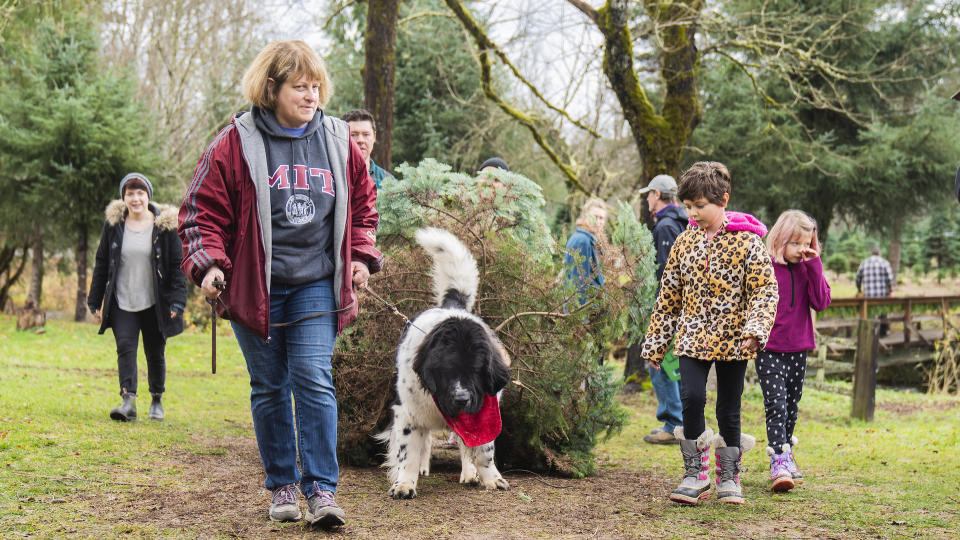
A Newfie is a great dog for those who enjoy being a talking point in town. Newfies invite attention. Complete strangers will stop you in the street and ask to stroke your dog, kids love to cuddle them, people will swivel their heads as you pass and want to question you about them.
24. Check local facilities
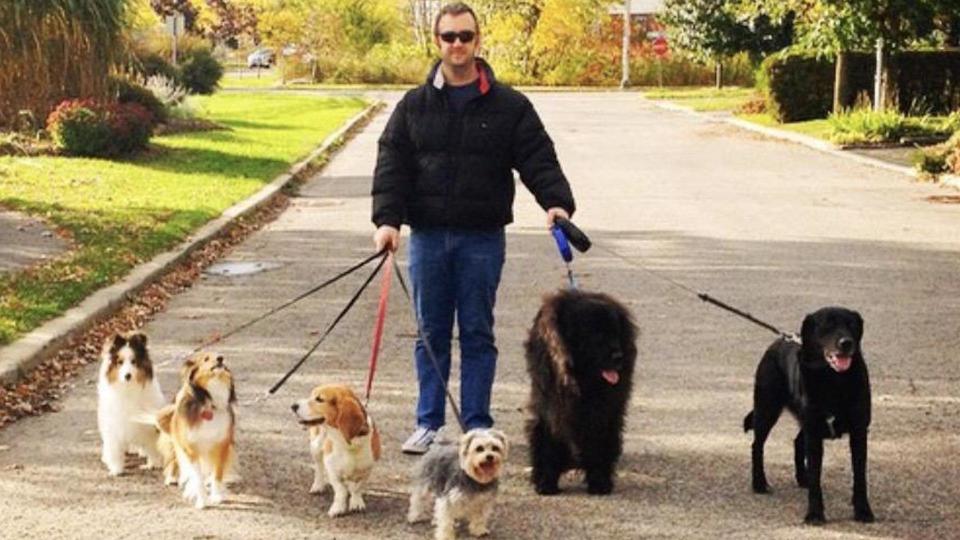
Not all groomers will take on a Newfie – and if they do they’re likely to charge extra due to the work those coats entail. And check out dog walkers and boarding kennels, too. Many dog-walkers are unable to manage giant dogs due to the strength required, while not all kennels are spacious enough to accommodate a Newfie, who needs adequate space to move around freely and have access to outdoor space. Likewise home-boarding families often can’t cope with a Newfie’s physical size and strength.
Bear in mind, too, that many commercial airlines don’t accept Newfoundlands on the grounds of their size and weight, so they need to be driven rather than flown.
25. Minimal prey drive
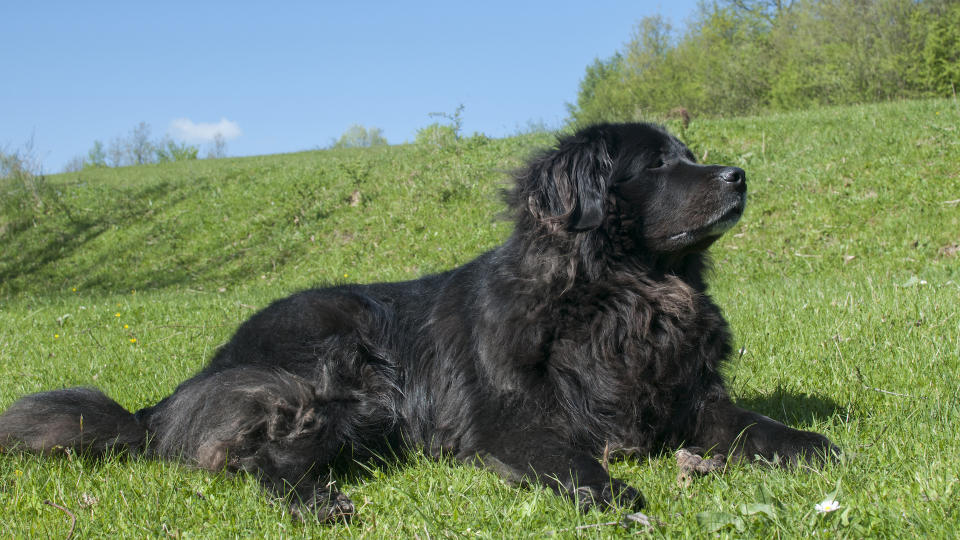
Newfoundlands don’t naturally love chasing prey, which is a considerable advantage given their size – they’d be hard to stop if they had their eyes on a prize. They tend to be gentle with other pets, small children and dogs, rather than seeing them as fun objects of pursuit.
26. Large lapdogs
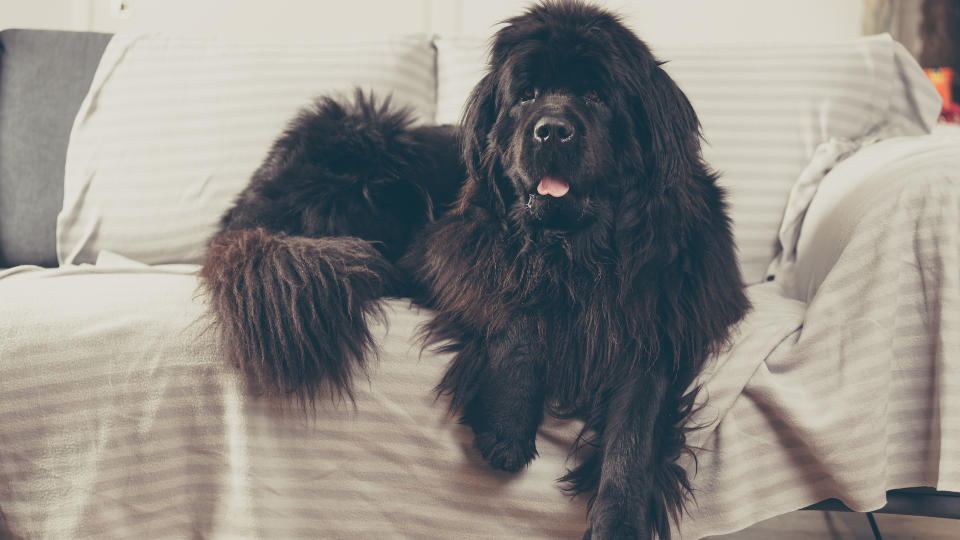
One of the most affectionate dog breeds, if a Newfie could snuggle into your lap, he’d be right there – but the couch will have to do. These are outsized lapdogs. They love being stroked, being around you, being hugged. They are super friendly and affectionate. It’s just a shame 150lb of huggable bear doesn’t fit on the average lap.
27. Heavyweights
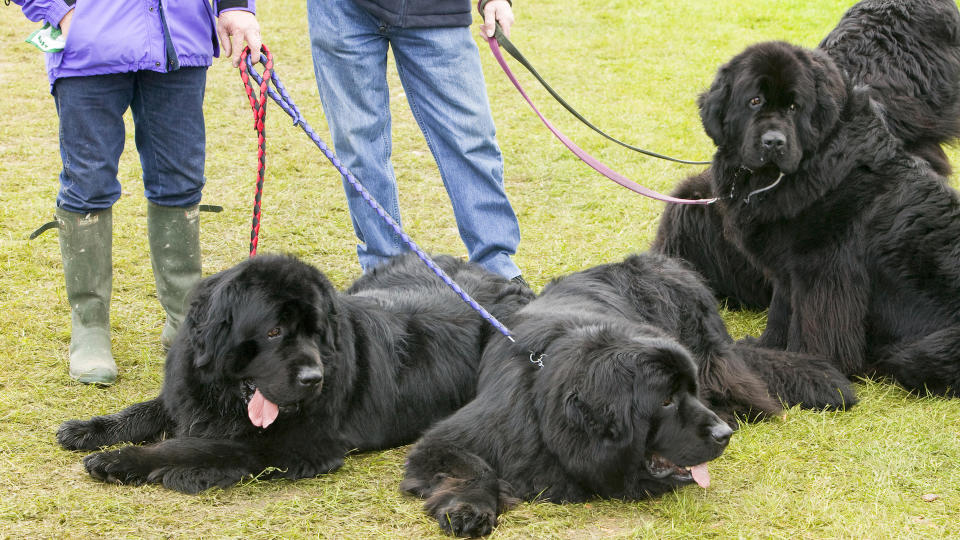
Newfoundlands need strong handlers. They can weigh over 150lb, and if they don’t want to get in the car to go to the vet, who is going to make them? A set of collapsible stairs or a pet ramp is handy, but it’s also useful if you are physically capable of lifting them if push comes to shove.
28. Lovers of the cold
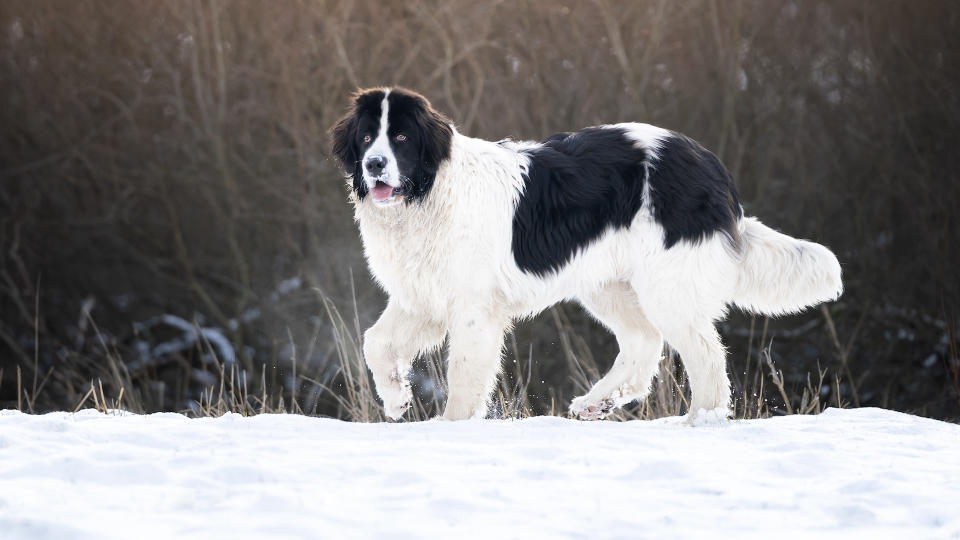
A Newfoundland is in his absolute element when the temperatures are low, and there’s rain, wind and ice. Thanks to his roots in the icy seas of Canada, coping with the cold is a breeze. They love capering around in the snow or freezing water, thanks to their dense, oily coat keeping them cosy.
29. Vet bills

Everything simply costs more with a Newfie, largely (pardon the pun) due to their size. They need double the flea/tick treatment and wormers to most dogs, double the medicine dose, many need joint supplements as their size means they can be prone to joint issues, including hip dysplasia, and some suffer from allergies requiring medication.
30. Watch out for your toes
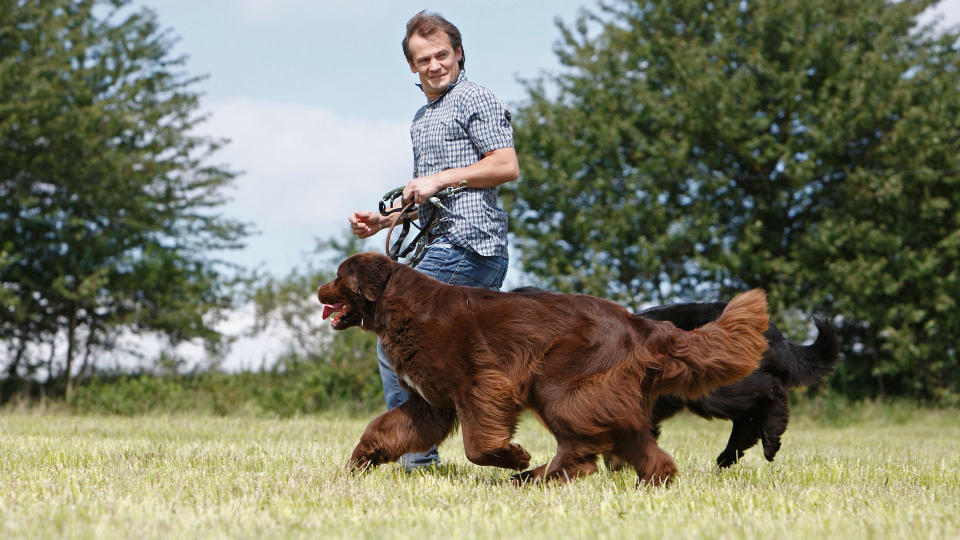
Wear steel-capped shoes or bear the brunt of your Newfie constantly stepping on your toes. They love to be close by, but they are on the clumsy side and, like an inept dancer, they rarely get their own feet out of the way in time, landing like a bag of cement on your toes. Ouch.
31. Super smart
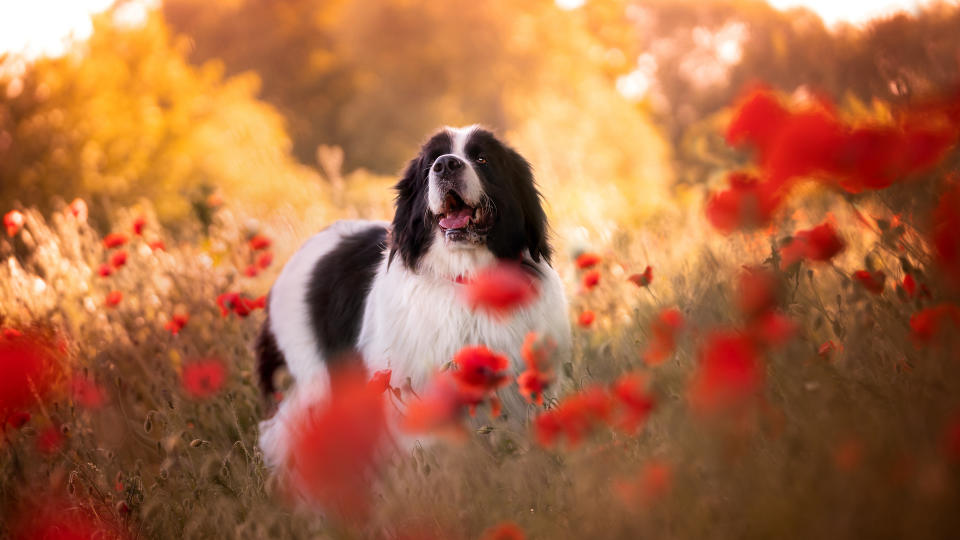
Intelligence may not quite the trait you’re looking for in a dog, but Newfies have it in spades. Their cumbersome, fluffy bear-like appearance may give the impression that they’re slow-witted but the truth is far from it. Most Newfoundlands are pretty smart, they can weigh up decisions and the merits of your commands, they should be trainable – but often on their terms. They are extremely intelligent and therefore obedient if the training is done correctly. And if they have conned you into thinking they aren’t really that bright, more fool you!
32. Heat haters
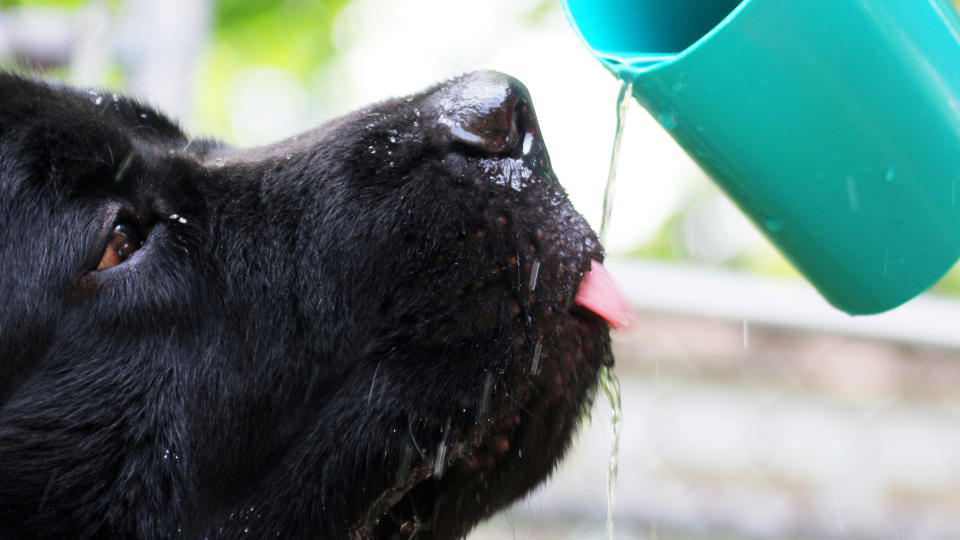
As befits a dog wearing a coat that wouldn’t look out of place on a polar bear (in another color), they're definitely not one of the best dog breeds for warm climates. They were bred to withstand extreme cold, not heat, and therefore are prone to heatstroke. Many start to pant when the temperature exceeds 50ºF. Newfies definitely benefit from air conditioning, cooling pads and cooling jackets on hot summer days, although those that are raised in warmer climates are better adapted.

